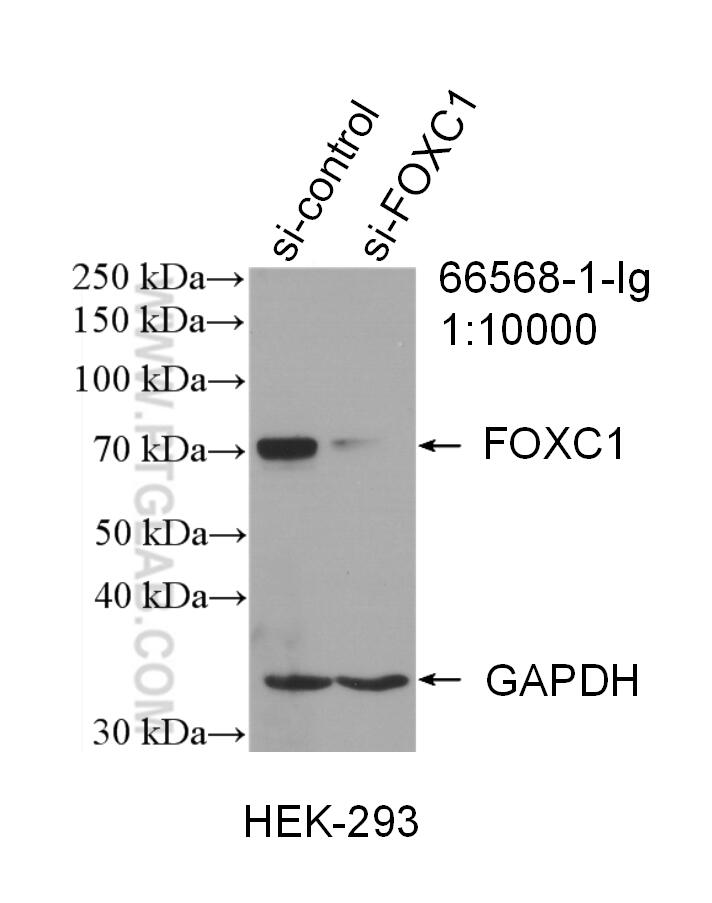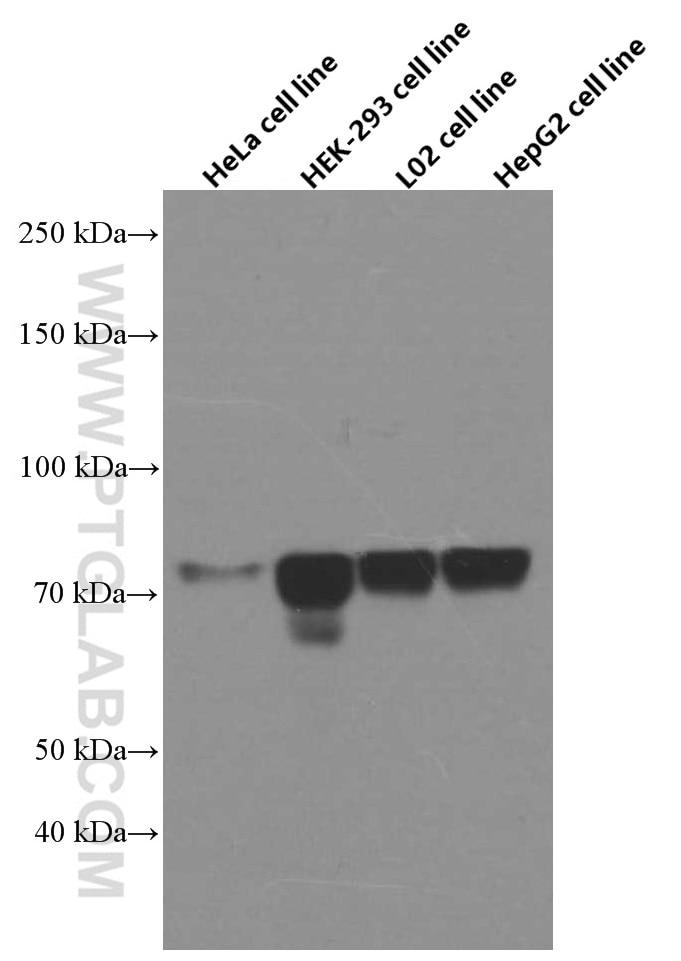- Phare
- Validé par KD/KO
Anticorps Monoclonal anti-FOXC1
FOXC1 Monoclonal Antibody for WB,ELISA
Hôte / Isotype
Mouse / IgG1
Réactivité testée
Humain
Applications
WB,ELISA
Conjugaison
Non conjugué
CloneNo.
1F4E11
N° de cat : 66568-1-Ig
Synonymes
Galerie de données de validation
Applications testées
| Résultats positifs en WB | cellules HeLa, cellules HEK293, cellules HEK-293, cellules HepG2, cellules L02 |
Dilution recommandée
| Application | Dilution |
|---|---|
| Western Blot (WB) | WB : 1:2000-1:20000 |
| It is recommended that this reagent should be titrated in each testing system to obtain optimal results. | |
| Sample-dependent, check data in validation data gallery | |
Informations sur le produit
66568-1-Ig cible FOXC1 dans les applications de WB,ELISA et montre une réactivité avec des échantillons Humain
| Réactivité | Humain |
| Hôte / Isotype | Mouse / IgG1 |
| Clonalité | Monoclonal |
| Type | Anticorps |
| Immunogène | Peptide |
| Nom complet | forkhead box C1 |
| Masse moléculaire calculée | 57 kDa |
| Poids moléculaire observé | 70-75 kDa |
| Numéro d’acquisition GenBank | NM_001453 |
| Symbole du gène | FOXC1 |
| Identification du gène (NCBI) | 2296 |
| Conjugaison | Non conjugué |
| Forme | Liquide |
| Méthode de purification | Purification par protéine G |
| Tampon de stockage | PBS avec azoture de sodium à 0,02 % et glycérol à 50 % pH 7,3 |
| Conditions de stockage | Stocker à -20°C. Stable pendant un an après l'expédition. L'aliquotage n'est pas nécessaire pour le stockage à -20oC Les 20ul contiennent 0,1% de BSA. |
Informations générales
FOXC1, also named as FKHL7 and FREAC3, binding of FREAC-3 and FREAC-4 to their cognate sites results in bending of the DNA at an angle of 80-90 degrees. Defects in FOXC1 are the cause of Axenfeld-Rieger syndrome type 3 (RIEG3). Defects in FOXC1 are the cause of iridogoniodysgenesis anomaly (IGDA). Defects in FOXC1 are a cause of Peters anomaly.
Protocole
| Product Specific Protocols | |
|---|---|
| WB protocol for FOXC1 antibody 66568-1-Ig | Download protocol |
| Standard Protocols | |
|---|---|
| Click here to view our Standard Protocols |



